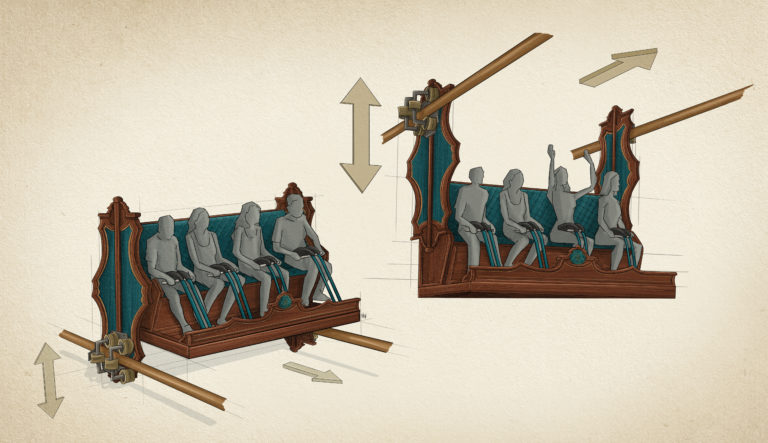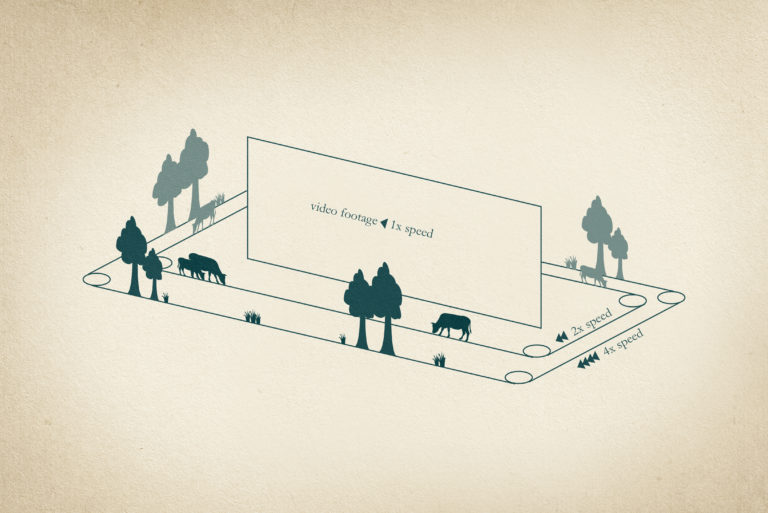At the turn of the 20th century, Europe was at the height of its belle époque. The times were characterized by a sense of optimism and prosperity, knew a flourishing scene of cultures and arts and lead to marvelous breakthroughs in the fields of science and technology. Much of this Golden Age’s heritage that we have today stems from the culminating events that formed the summit of it all: the renowned Expositions Universelles. What would it be like to step in the shoes of an inventor who is about to present his idea at this major event?
TASTE OF EUROPE – THE TASTEFUL TRAVELS OF OLIVIER FLAMBÉ
In Taste of Europe – The Tasteful Travels of Olivier Flambé, culinary inventor Olivier Flambé sends guests on a journey across turn-of-the-century Europe to collect input for his newest invention: the FusionCuisine XL 1900. The FusionCuisine XL 1900 is able to combine tastes from around the world into unique dishes that the world has never seen before. However, Flambé is in desperate need of input for his machine: the actual tastes from around the world themselves! Therefore, he urges guests to help him in order to be able to present his invention at the upcoming 1900 Exposition Universelle in Paris. Guests are therefore sent on a journey across the European continent to collect tastes as input for this machine.
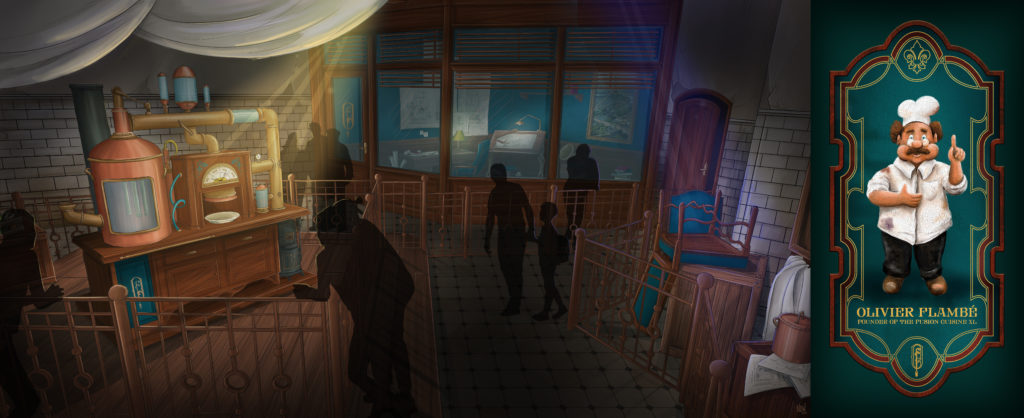
Guests start their experience in a Parisian bistro in the age of the belle époque, where Olivier Flambé reveals his plans. After having been introduced with Flambé’s plans for the FusionCuisine XL 1900, guests board the renowned Orient Express on an exciting trip to Eastern Europe where they collect exotic tastes for Flambé’s machine to thrive. Guest’s first attend Budapest, where they will unboard the train and walk all the way to Venice. From Venice, guests use the Orient Express to return to the opening of the 1900 Exposition Universelle in Paris, where Flambé hopes to present his invention in a specially designed expo restaurant to blow his guests away with dishes that the world has never seen before.

ATTRACTION TYPES
Taste of Europe evolves around an attraction that combines two ride systems which are connected by a walk-through. First, the Orient Express takes guests from Paris to Budapest in a specially designed ride system that we name the SideRail System. There, guests leave the train to enter an immersive walkthrough experience which takes them from Budapest to Venice. In this walkthrough, guests are able to get in touch with various tastes from this side of the European continent through various bars and food outlets. When arrived in Venice, guests board the Orient Express back to Paris. There, they arrive at the festive opening of the 1900 Exposition Universelle, where Olivier Flambé presents his FusionCuisine XL 1900 in a restaurant specially designed to his invention, where guests are invited to dine in style under the grandeur of cast-iron expo architecture. Guests can then discover the unique tastes that the machine is able to combine into a mouth-watering diner, based on their very own input.
CONCEPTUAL AND TECHNOLOGICAL NOVELTIES
Taste of Europe presents three novelties. First, there is the aforementioned SideRail System. In this system, guests sit in a coach that is connected to two separate rails on the side of the vehicle, which are mutually connected outside of the guests view – much like in a pipeline coaster. The benefit of using rails on the side, is that the coach can move up and down as well, which allows for creating minor freefall segments in the ride. In Taste of Europe, the coach is positioned on top of the rail for the majority of the ride so as to simulate a tranquil train ride. In one segment of the ride where the train accidentally follows a more perilous railroad track which seems to be under construction, the ride vehicle falls down so as to suggest that the track is collapsing.
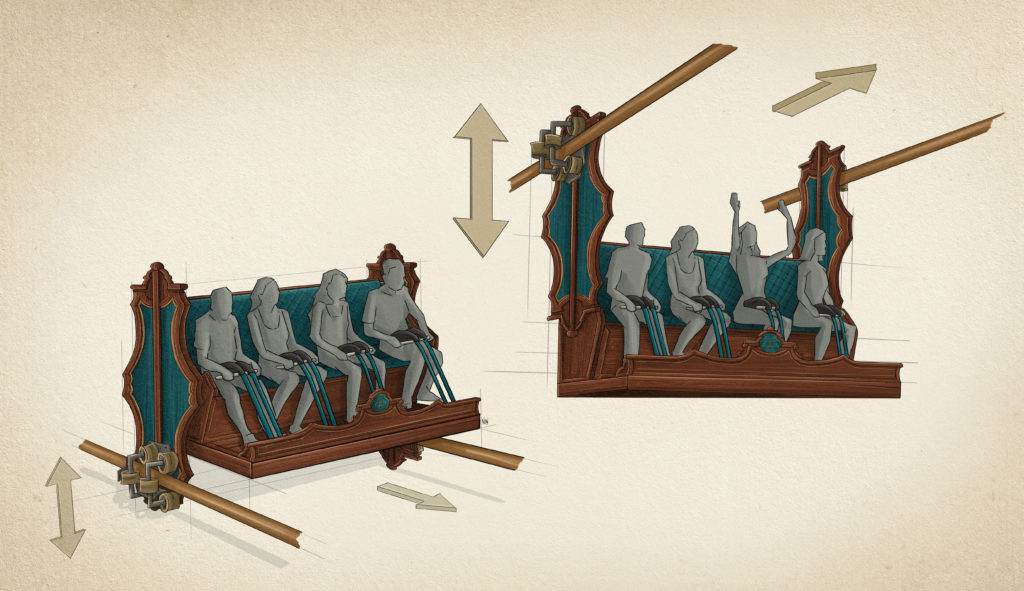
A second novelty is the idea that you can step out in the middle of an attraction to further explore a world that you usually are only passively transported through. After a first trip on the Orient Express from Paris to Budapest (provided by a first section of the SideRail System), guests step out of the ride vehicle to continue their journey by foot as they enter an immersive walkthrough that takes them from Budapest to Venice. In Venice, guests board the Orient Express again (provided by a second section of the SideRail System) which takes them back to the opening of the 1900 Expo Universelle. Backstage, both the first and second section of the SideRail System are connected, so while they appear to guests as two separate ride systems, in fact the SideRail System forms one closed loop.
A third novelty is the creation of a parallax effect with a combination of both video footage and physical scenery. In the back of the room, a video screen displays those vistas that are furthest away from the train cabin. In front of the screen, there is a series of moving belts with scenery on top of them that operate at various speeds: the closer to the train cabin, the faster the operation of the belts. Scenery on the belt consist of objects that can frequently pass by, such as trees, bushes or posts with railway cables. Scenery on the video screen consist of vistas that change from the French countryside to the Hungarian plains, thus mimicking the idea of travelling from one European country to another. Using the system of props passing by at varying levels of speed, this set-up allows for mimicking the typical experience on a train that objects closeby seem to pass quicker than those faraway.
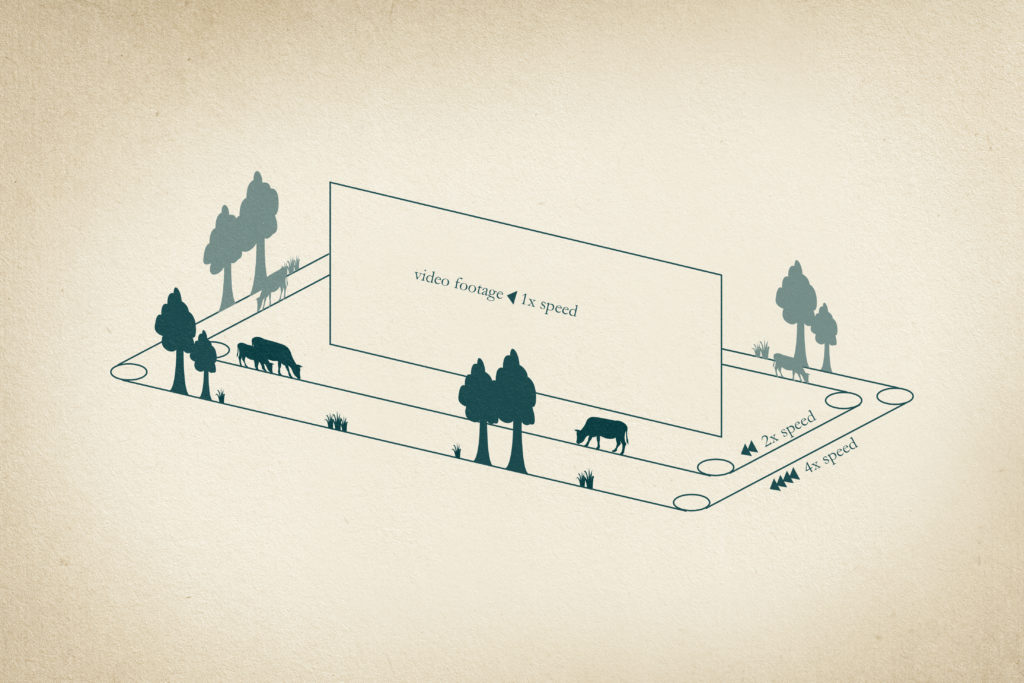
Taste of Europe combines several elements that greatly enthuse us as a design team. From the grandeur of a turn-of-the-century Europe and the romance of travelling using the Orient Express, to the exquisite art nouveau of the French capital and the naivety of a self-made inventor who is steered by a vision to make the world a better place. We hope that Taste of Europe provides the reader with just as much joy as we had in developing it. Bon voyage!
de-Waal-Booklet-Storyland-DEF-Lower-Res.pdf
Nicky de Waal
Wim Strijbosch
Tim Beeren
Mark van Rooij
Vincent Keuchen



